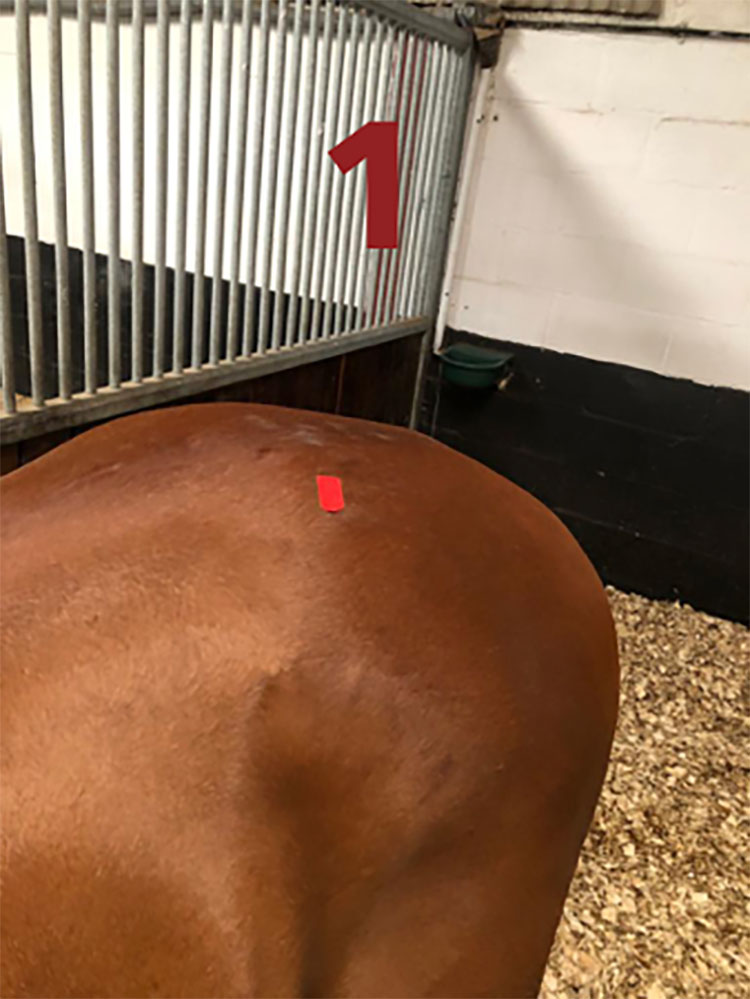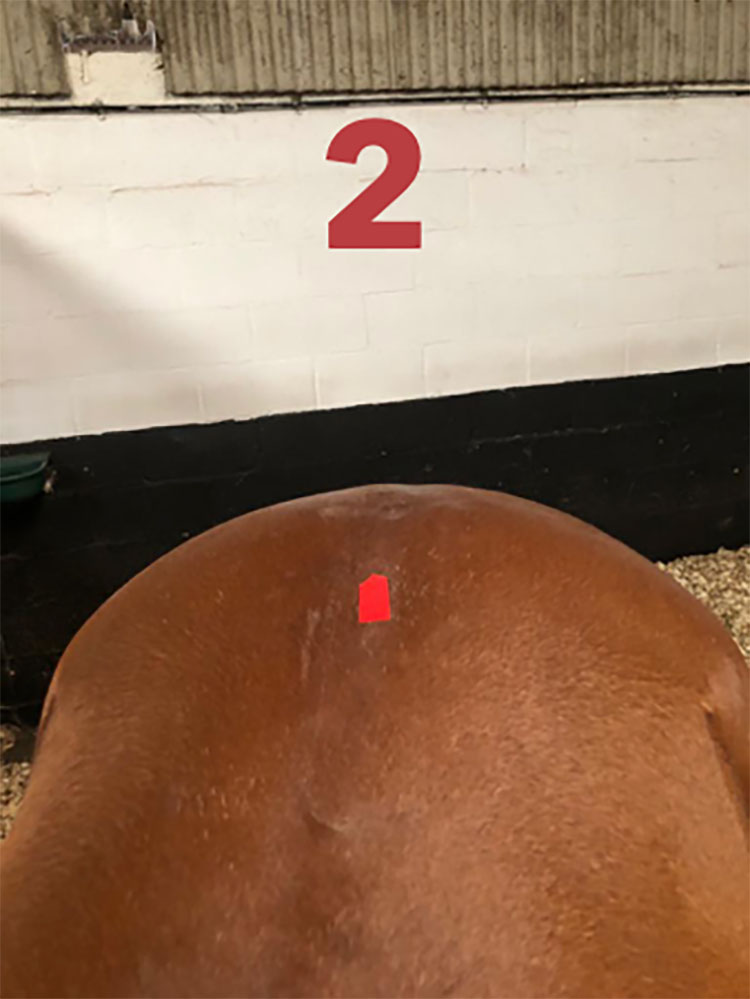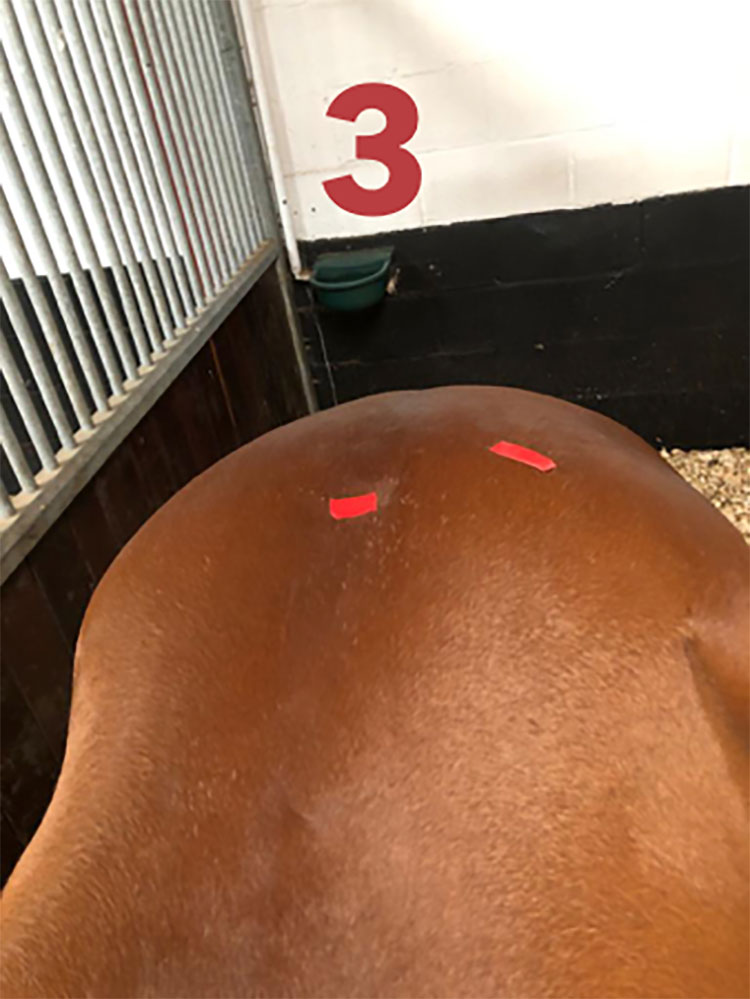Lumbar Sacral Disease, Sacroiliac Disease
& Proximal Suspensory Desmitis
It has become evident over the past decade that when coming across sacroiliac problems there is a diverse range of treatment methods prescribed with a very mixed bag of success. In my experience, the importance of successful treatment is correct diagnosis. For too long we have grouped a number of biomechanical attributes to ‘sacroiliac disease‘. For the past 10 years, I have been trying to differentiate between lumbar sacral disease and sacroiliac disease because the success of the treatment and stabilising the condition long term depends on the structure involved.

Picture 1 shows the sacroiliac joint deep underneath this point.

Picture 2 shows the lumbar sacral junction is deep underneath this point.

Picture 3 shows from the surface, the lumbar sacral region and sacroiliac area, which are deep underneath.
I produced a lecture as far back as 2010, linking sacroiliac disease with proximal suspensory ligament desmitis (PSLD). I still firmly believe that the two are closely related and if both are targeted, then the success rate of the horse returning to function are greatly improved.




